
views
Mastering Breathing and Concentration

Focus on rhythmic breathing. As you prepare for Qigong, settle into a full, relaxed rhythm of breath before you begin your practice. The quality of your breath is directly related to the quality of your practice. For the vast majority of people, breath is bound by habitual patterns and stored tension. Your goal is a state where the breath rolls in and out smoothly, like calm waves. No rushed exhales, no gasped inhales. However, do not force it or you will only generate a new form of tension and distract yourself from the practice.

Stretch your breath. It is beneficial to stretch the breath before you begin your practice, but forget about it while you practice. Stretching your breath will help you relax more and will help you commit to Qigong better. To stretch the breath, start with a simple inhale for a slow count of six; hold for three; exhale for six; hold for two; repeat. Any time you become short of breath or tense let the pattern go until breaths become comfortable, then return to the holds. As this becomes easier, expand the breath to a count of eight, ten, and so on – holding for half at the top of the inhale and a third at the bottom. After working the breath for ten minutes or so, relax into a natural rhythm again.

Settle the mind. Settling your mind is one of the most important things before you practice Qigong. If your focus is scattered, your energy will be scattered too. In addition, settling the mind is one of the most important skills that Qigong will help you cultivate. This is a skill that will not only bring you peace, but potentially help reduce blood pressure and stress levels, thereby prolonging your life. Don't waste time and create tension by trying to force the mind to be silent. Instead, look for silence under the noise of random daily thoughts. Focus your attention on watching your breath. As thoughts come up, no matter how clever or seemingly prevalent, notice that you are thinking them and then turn back to the breath. Gradually, your mind will become quieter. You can settle your mind as you stretch your breath. EXPERT TIP James Brown James Brown Meditation Coach James Brown is a San Francisco Bay Area-based teacher of Vedic Meditation, an easy and accessible form of meditation with ancient roots. James completed a rigorous 2-year study program with Vedic masters, including a 4-month immersion in the Himalayas. James has taught thousands of people, individually, and in companies such as Slack, Salesforce, and VMWare. James Brown James Brown Meditation Coach Our Expert Agrees: When I teach people to meditate, I tell them not to worry about what they're thinking or how many thoughts they have. Otherwise, you're spending a lot of mental energy just to clear your mind, and that can be really tiring. When you stop caring about what you're thinking, it's actually much easier to get to a place where you discover your true thoughts.

Relax the body. After mental relaxation, you need to relax your body. Bodily relaxation is key to Qigong and key to promoting good overall health. Relaxing your body, though, is a very mental activity, too. Make sure to: Scan very slowly through the body, head to toe, releasing tension as you go. Repeat three times. Every part of your body should feel at ease and heavy--don't stay rigid and tensed up. Any tension or muscle anxiety should vanish. Your body should feel as if you are sinking toward the ground.
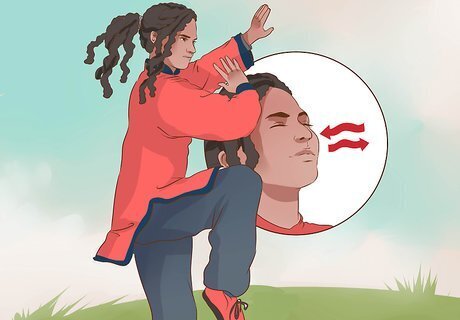
Move and breathe in unison. Qigong is movement and breath in unison. In general, unless specifically trained to do otherwise for certain movements or forms, you should maintain deep, relaxed, even breaths. Because the breath and movements are linked, the moves should be slow, and maintain that deeply rooted relaxation.
Completing Qigong Sets
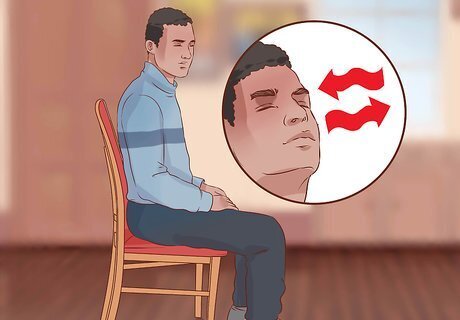
Practice sitting posture. Once you've mastered body and mind regulating techniques, you'll be ready to start completing sets of Qigong postures. The sitting posture is one of the most common and one you should practice often depending on your situation and environment. The sitting posture will improve your overall posture and promote a feeling of confidence. Sit upright in a chair with your feet on the ground. Your legs should be separated. Your torso should be at a right angle to your thigh. Rest your eyes and mouth by closing them. Do not try to smile, but allow your mouth to relax to a natural shape.
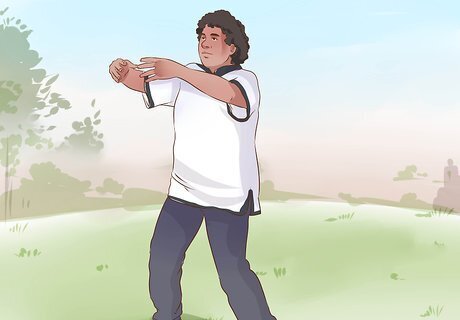
Try the standing posture. The standing posture is one that you can work on at various times throughout the day. It is a relatively easy posture to master and will build on the other postures and will promote confidence and overall well-being. Stand upright. Your feet should be parallel and at shoulder width. Allow your knees to bend slightly. Raise your arms so that your hands are even with your shoulders or just slightly lower. Your elbows should be allowed to bend slightly. Your hands should be about a foot apart and your palms should be pointed downward. Allow your fingers to be separated and slightly curved. Pretend you are holding a ball in a relaxed manner. As with sitting posture, your eyes and mouth should be closed in a natural and unforced way.

Work on the walking posture. The walking posture is one you can practice in your spare time and will help relax you. The walking posture definitely requires a larger space to practice than the sitting or standing posture, so plan accordingly. When working on your walking posture, make sure to: Always lift your feet up heel first. Move forward with your left foot first. Allow your body and hands to sway rightward as you move. Only move forward with your right foot as your left is completely on the ground. Practice for thirty minutes or longer.

Try other postures. There are a wide variety of other postures you can learn and work on when practicing Qigong. Different postures will focus on different parts of the body. They will also help you hone mental control and promote spiritual awareness. All postures demand that you rely on breathing and mental relaxation techniques. Consider: The supine posture. This is a laying down posture. Lie on your back with your legs straight out and your arms by your sides. This posture is intended to relax you. The sideways lying posture. Lie on your side. Keep your upper body straight, but make sure to bend your legs slightly. Put your upper hand on your hip and your lower hand by your head. This posture is intended to relax you. The half-lotus posture. In this posture, you will sit up. Your left foot will rest on your right thigh which will be under your left knee. Also, make sure to rest your hands on your knees. This helps stretch your legs and lower body. The cross-legged posture. Sit upright and cross your legs. Rest your hands in front of your stomach. This will stretch your legs and relax you.
Understanding Qigong

Learn about Qigong. Qigong is an ancient Chinese exercise and health system that uses physical exercise, breathing, and mental control to promote overall health. Qigong dates back to at least 300 BCE and probably before. Over the last 2300 years, it has developed into a complete wellness regimen with a variety of derivations and practices. Here are a few basics about Qigong: ”Qi” pronounced “chee” is often translated to mean “life force.” Qigong is an all-encompassing approach that addresses mental, physical, and spiritual improvement. Qigong not only improves physical health but mental and spiritual well-being as well, as it can reduce stress and increase your ability to focus mentally.
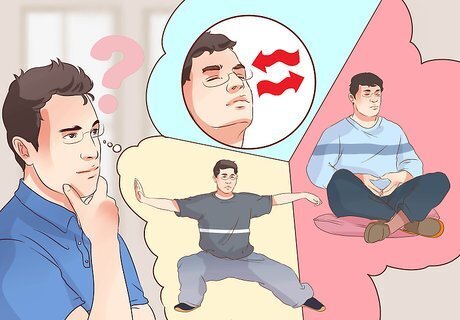
Familiarize yourself with how you will practice Qigong. After learning about Qigong, you should know exactly what Qigong practice entails. This will enable you to prepare for practice and to better commit yourself to the comprehensive health program that Qigong represents. Know that when you practice Qigong, you will: Practice breathing techniques. Practice different postures. Meditate. Engage yourself in guided imagery. This guided imagery will help you focus and help you put your mind on the goals you want to complete in life. Practicing Qigong could take as little as 30 minutes a day or much longer.

Determine if Qigong is right for you. After you've learned about Qigong and know what it entails, you should think carefully about whether Qigong is right for you. In order to figure this out, you need to think about your goals and what you want to accomplish with Qigong and in your life in general. Think about the following: Are you solely interested in physical improvement? If so, Qigong might not be able to help you build substantial muscle tone or bulk up. However, it could be a great supplement to a more expansive exercise and weight-training regimen. Do you have the time to practice Qigong? While you can practice Qigong in as little as 30 minutes a day, you'll have to commit a decent amount of time to really understand and perfect your form and figure out how to meditate (if you have no previous experience). In addition, Qigong has its best results if you commit to practicing it over the long-term— that is, for years. Do you have patience? One important determining factor is your level of patience. With Qigong, results don't come instantaneously. Instead, you'll have to concentrate, focus, and practice with dedication
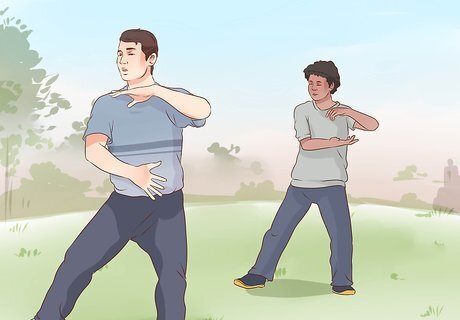
Find a teacher. Seek out a skilled teacher—someone who can train you on a full system. While you can learn and succeed at Qigong, teachers are extremely helpful in making sure you are perfecting certain techniques and have the knowledge to advance and master new forms. The best teachers are those who strongly encourage individual practice. They should also be able to offer exercises and meditations to develop the right state of being mentally and otherwise. What you want to avoid is someone who just has a form to show you, or even a few forms. Forms are just one piece of the whole and many are of limited use unless you've done the exercises to support them. Additionally, if the teacher spends too much time speaking about grand theory or what the form will eventually do for you, this may be negative. The focus should be on the practice and where you are at now. Theory is good, but avoid those who rely too heavily on words.

















Comments
0 comment